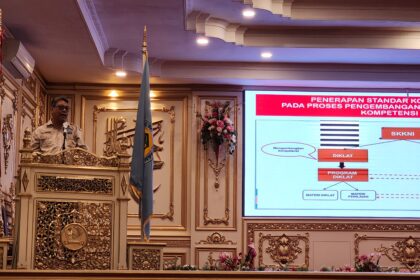[ad_1]
PERTH – As the China-Australia trade war moves from product to product, ranging from barley to lobsters to wine, Beijing has so far refrained from imposing any ban or barrier on Australian iron ore.
As global prices soar for the ore, China’s insatiable appetite and inability to find suitable substitutes are net-net insulating Australia from Beijing’s punitive intent. Â
Australia supplies 53% of global demand for iron ore, of which China consumes 57%. According to the March edition of Resources and Energy Quarterly, Australia currently supplies 68% of China’s iron ore imports.
Prices for the steelmaking commodity hit a record high of US$233 per tonne earlier this month, an uptrend that began last year but is now increasingly a reflection of growing global inflation fears and market concerns of Covid-caused supply disruptions in Brazil and elsewhere, the REQ report said.
Those prices fell by as much as 20% this week when China’s National Development and Reform Commission (NDRC) announced a “zero tolerance†crackdown on “excessive speculation†of the ore amid reports of commodity trader hoarding.
“The relevant regulatory authorities will closely follow and monitor commodity price trends, strengthen the joint supervision of commodity futures and spot markets, ‘zero tolerance’ for illegal acts, continue to increase law enforcement inspection efforts, check abnormal transactions and malicious speculation, resolutely and severely investigate and punish in accordance with the law,†a NDRC statement read.Â
Analysts still expect Australia’s iron ore exports will continue to grow. “Australia’s export volumes are expected to grow from around 900 million tonnes in 2020–21 to 1.1 billion tonnes by 2025–26, as several mines open or expand in Western Australia,†the REQ report predicted.
China could eventually have other viable options outside of Australia. Indeed, Beijing earlier this week signaled its intent to diversify its supply from Australia and boost self-sufficiency.Â
In the medium term, the REQ report notes iron ore exports are expected to increase from Africa and Latin America. Rio Tinto’s tie-up with China’s Chinalco in the Simandou project in a remote part of Guinea is one new particular source with solid prospects.
Elsewhere in the same region, a consortium of Chinese, French and Singaporean companies recently signed with the government to develop two iron ore blocks for US$14 billion. China is also looking at two large deposits elsewhere on the continent, though these are seen by market analysts as longer-term prospects.
In the shorter term, few analysts believe China can quickly pivot from Australian supplies as long as its steel production remains on the same up-and-up trajectory. Most of China’s various infrastructure projects, from high-speed train lines to urban modernization, are steel-intensive.  Â
Meanwhile, a long-term China shift away from Australian iron ore will be complicated and potentially full of supply chain-disrupting pitfalls and economic risks.
An early 2021 China Ministry of Industry and Information Technology report, only recently picked up by the Australian media, outlined Beijing’s plans not only for bolstering local iron ore supplies but also investment plans to boost production capacity in nations including Russia, Myanmar, Kazakhstan and Mongolia.
The plan calls for achieving 45% “self-sufficiency†in iron ore in less than five years. In that direction, the NDRC said a week ago it wants to see more domestic production and a generally more diverse supply base.Â
China could also use more scrap metal to increase its steel production. Separately this week Chinese authorities lifted tariffs on imports of scrap to cushion the blow of higher ore prices but at the same time placed tariffs on exports of some steel goods.Â
The burning question in Australia is which product, or products, will be hit next by punitive Chinese tariffs or trade restrictions. Last week, China signaled its intent in a statement that said bilateral trust had been “shattered†after the suspension of Belt and Road Initiative projects in Australia.
A Chinese government statement said “The Chinese authorities have no choice but to make a legitimate and necessary response. The responsibility is fully on the Australia side.â€
China’s restrictions and tariffs to date have hurt: Australia’s A$1 billion wine export industry to China saw a first quarter fall of 95% after trade war tariffs were imposed.Â
A next trade flare-up could erupt if the government scraps the 99-year Port of Darwin lease granted to a Chinese company and signed by the Northern Territory government five years ago. Canberra said recently it would assess every agreement made by a state government with China.Â
But regardless of which Australian export industry China targets next, iron ore will likely remain immune in the short term — unless Beijing wants to curtail its steel production in the middle of a post-pandemic infrastructure-building boom. Australia’s LNG exports to China are similarly immune in the mid-term for the same reasons.
Western Australia, which is home to the majority of Australia’s iron ore and its highest quality deposits, has made some very cursory moves to think beyond China, even as the re-elected McGowan Labor government is clear of the centrality of the trade relationship to the state’s fortunes.
The government has been talking up commercializing deposits that never quite made commercial sense even at the height of the iron boom and amid persistent talk of creating a “green steel†industry.Â
The state Labor government, which is essentially a one-party democracy since its election landslide that left the Liberal Party just two seats in the Lower House, has been quiet on China recently.
But in March last year, its premier used a speech at a resources event to underline the importance of the China trade relationship and hit out at Canberra for causing what he saw as unneeded waves.Â
[ad_2]
Source link










